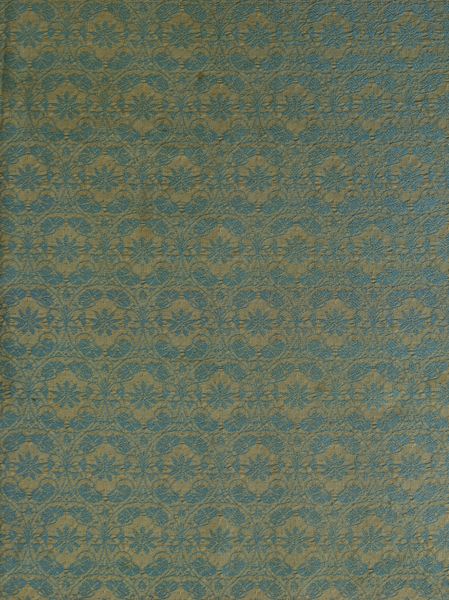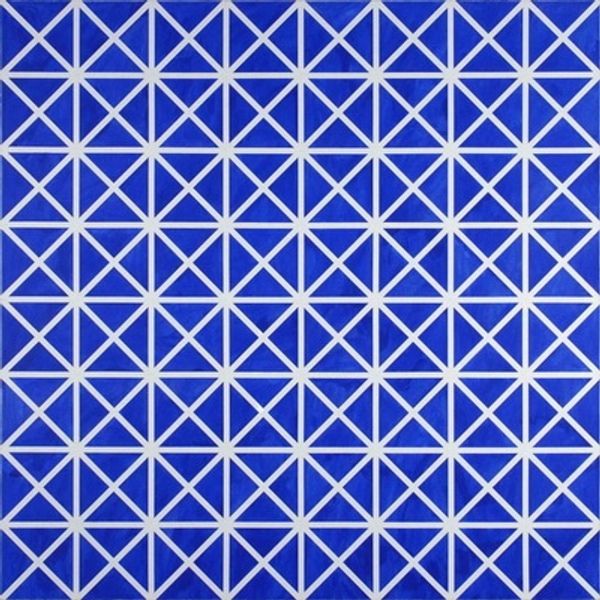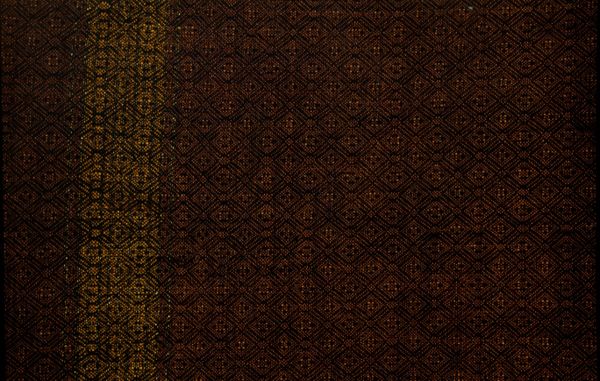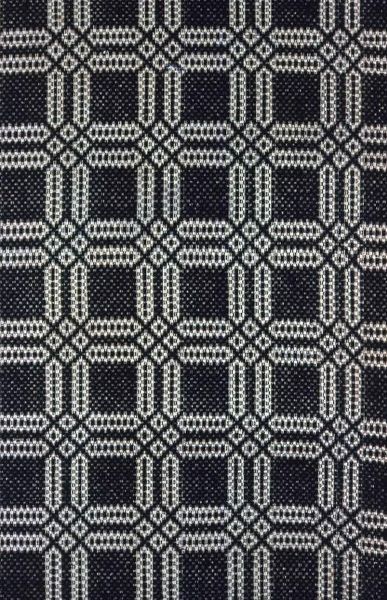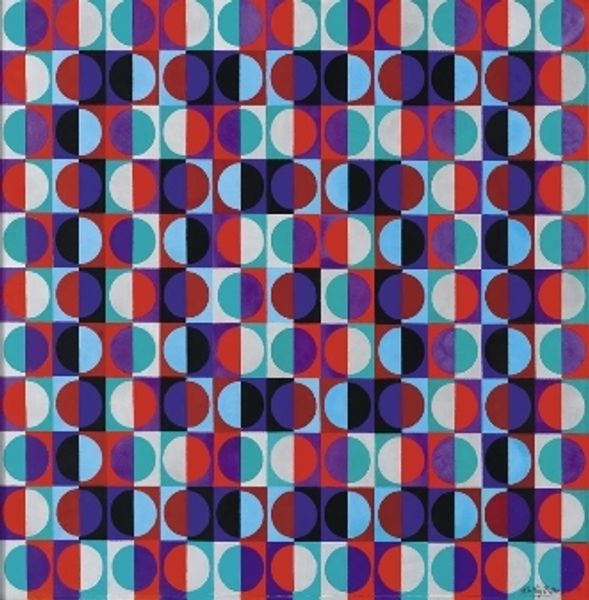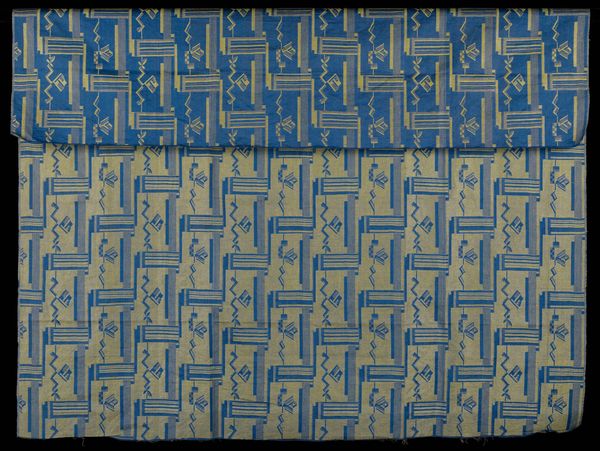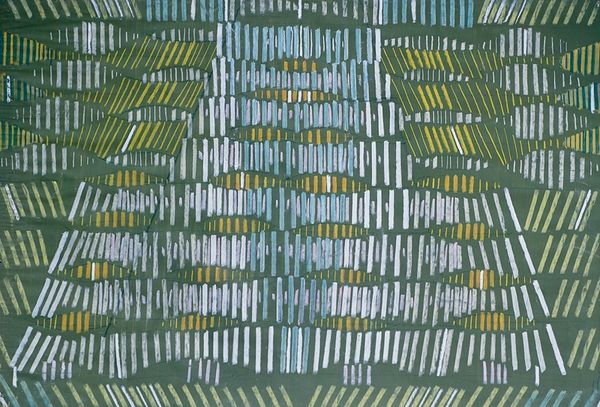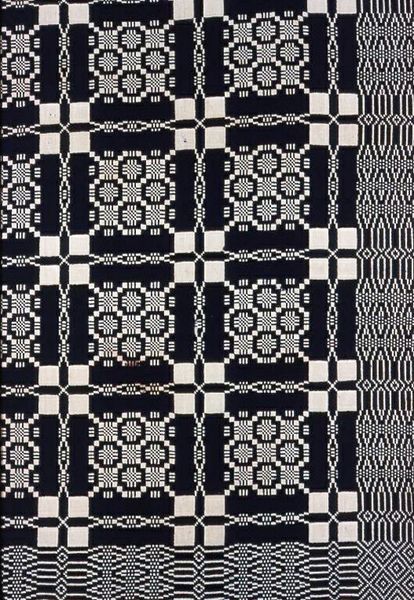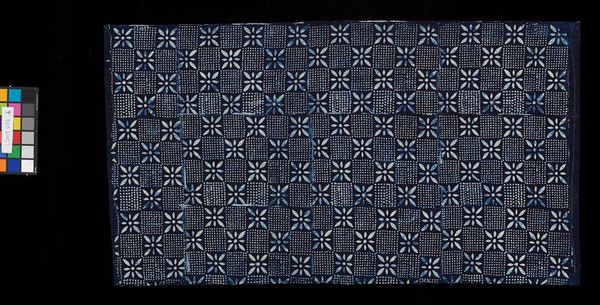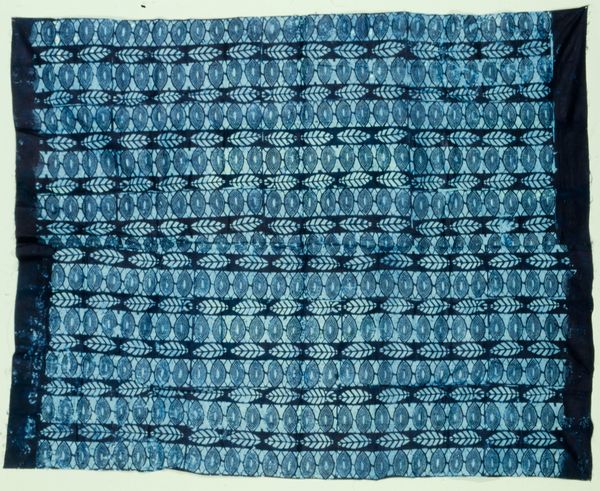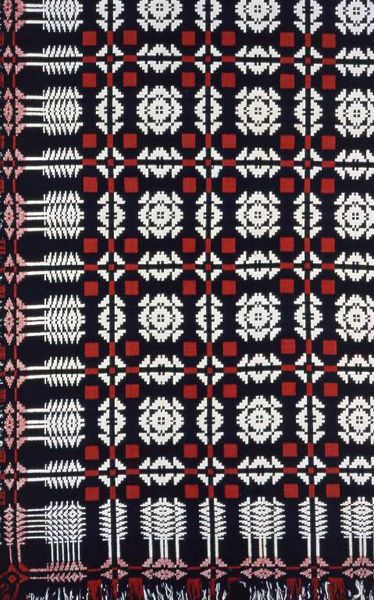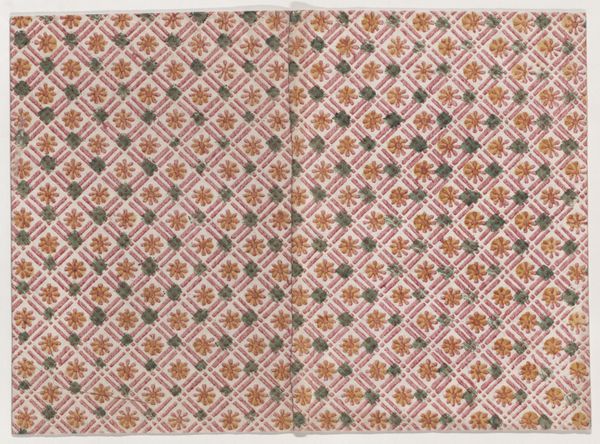
textile, cotton
#
pattern
#
pattern
#
textile
#
geometric
#
cotton
Dimensions: 80 x 112 in. (203.2 x 284.48 cm)
Copyright: Public Domain
This cotton coverlet with indigo dye was produced by an anonymous maker at an unknown date. This handmade textile speaks to a rich history of domestic arts and crafts. The striking geometric pattern, created through the careful application of indigo dye, reflects both the maker's skill and the broader cultural context of textile production. The regularity of the repeating pattern indicates how the division of labor and increasing specialization impacted even domestic production. While the artist is anonymous, and its exact origins remain uncertain, historical records like trade catalogs and pattern books can shed light on the circulation of designs and techniques during the time the coverlet was made. Understanding this coverlet involves considering the social, economic, and institutional forces that shaped its creation. By studying the material culture of textiles, we gain insight into the lives and labor of the people who made and used them.
Comments
minneapolisinstituteofart almost 2 years ago
⋮
Woven coverlets and hand-stitched quilts were frequently used as both utilitarian and decorative bed coverings throughout much of the 19th century. At the beginning of the 19th century most coverlets were woven by local handweavers using relatively simple, counter-balanced, treadle looms. This technology favored geometric patterns, often woven with white commercial cotton and handspun, indigo-dyed wool yarn which was sometimes produced by the family ordering the coverlet. Loom widths were narrow, and most of these coverlets were made of two or three panels which were sewn together to form the completed bed cover. Weaving so the pattern would be aligned required considerable skill.In the 1830s looms were adapted to facilitate the use of a jacquard pattern attachment which allowed the weaver to create complex, figured patterns, and these coverlets quickly became quite popular. Some rural weavers, however, continued making geometric patterns through much of the 19th century. After the 1880s this style of bed cover was less popular and it was not until the 20th century and the revival of folk weaving that these coverlets were produced for sale.
Join the conversation
Join millions of artists and users on Artera today and experience the ultimate creative platform.
